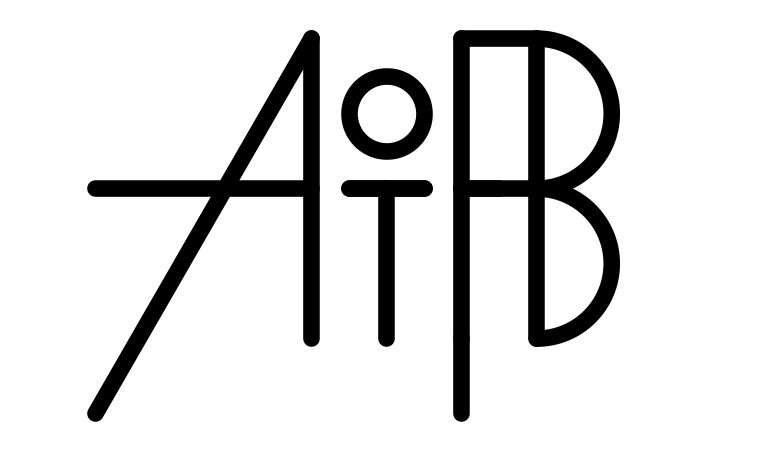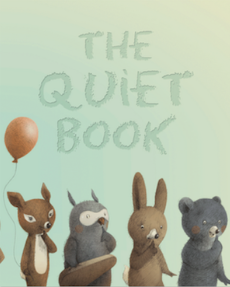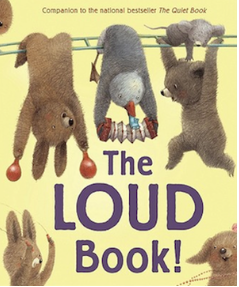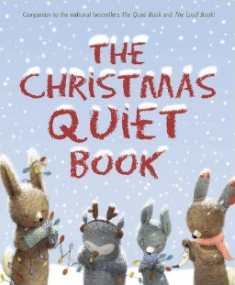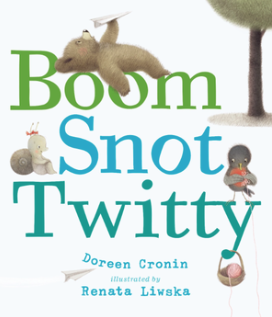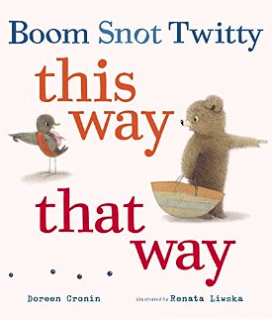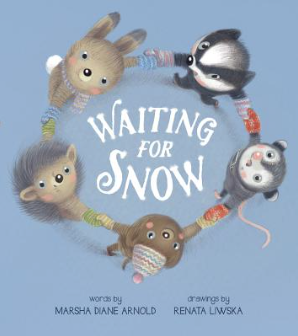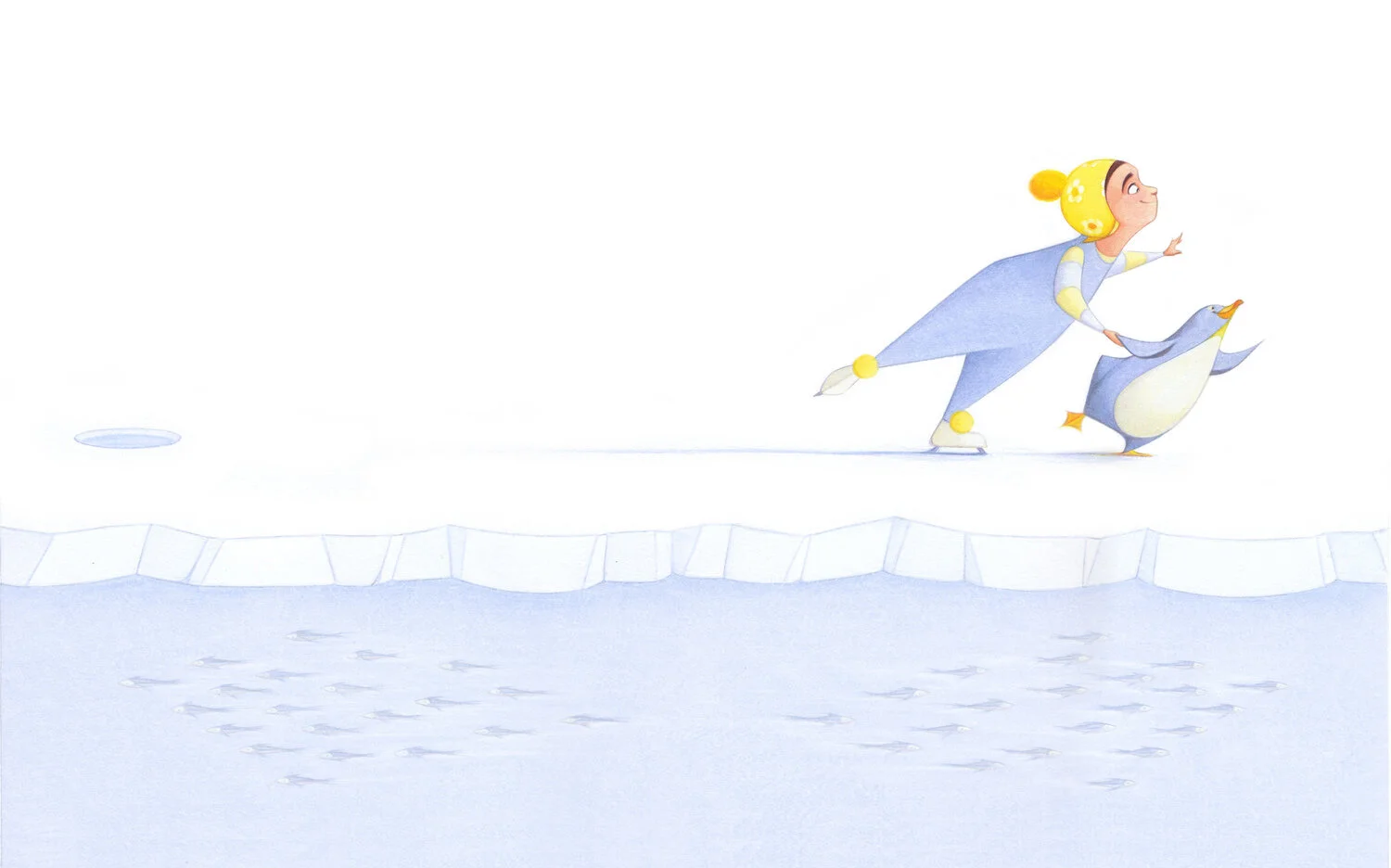An Interview with Renata Liwska
Renata Liwska
July 27, 2015
We interviewed Renata Liwska, award-winning children's book illustrator, notably of New York Times best selling The Quiet Book, and author and illustrator of Red Wagon. She has been a finalist for the Canadian Governor General's Award for Children's Illustration three times and was awarded a gold medal from the Society of Illustrators in 2010 for Original Art (Children's Book Illustration.) Originally from Warsaw, Poland, she now makes her home in Calgary, Canada.
A Selection of Work
The high school you attended focused on art as a discipline, and you were taught sculpture, painting and drawing. Did you submit a portfolio to be admitted?
Yes, it was in Warsaw, Poland where I grew up. At that time everyone had the same elementary education until grade 8 and then you would apply to get into a secondary school (college). I remember our math teacher asking the class what school they wanted to go to. When it was my turn, I told the class that I wanted to go to art school. My teacher wasn't too pleased, I had a lot of trouble with math so I wasn't a very good student. She said I wouldn't pass the entrance exams and that I should take up a trade instead.
Well, I was going to show her! I got a tutor and studied very hard. We had to submit a portfolio of artwork and even had to go and do some drawing exams from a still life. We also had to do an interview, write an essay, and do a math test and such. I remember that after the interview I was sure I had flunked out because my answer to most of the questions was, "I don't know!"
Cover of The Quiet Book, by Deborah Underwood, illustration by Renata Liwska
Later, when the results were posted, I couldn't see my name on the list and I was crushed! But my dad stopped by and looked at the list and said, "No, your name is on the list" and I am like Where? And he points "Right here" and sure enough my name was there!
At my previous school I didn't fit in very well, I was different. But at art school I did fit in, because everyone was different! Everybody was like me, they all had big imaginations and wanted to learn to draw and paint. Suddenly I had so many things in common with others which really made learning so much more exciting and easier. It was amazing to see the growth of everybody. In a very short time we were real artists. There wasn't anything I couldn't do, I was amazingly pumped about life and art.
Cover of The Loud Book, by Deborah Underwood, illustration by Renata Liwska
You've described your drawings as autobiographical. Do specific memories of childhood appear in your work?
It varies, sometimes it is a specific memory such as "Fire truck day at school loud" from The Loud Book, written by Deborah Underwood. When I was a child there was a fair for international children's day. At the fair there was a big line up, I didn't know what was happening so I went up to look. Someone just grabbed me and put me in the fire truck basket with other kids and we went all the way up! I was absolutely convinced the basket was spinning around in 360 degrees. I was terrified and screaming at the top of my lungs! But you know before that I had a vertigo problem and was afraid of heights, but after that traumatic incident I think I was cured because I wasn't afraid of heights anymore.
Interior spread from The Loud Book, by Deborah Underwood, illustration by Renata Liwska
Other times it is more about remembering how I felt as a kid. As an example "Pretending to be invisible quiet" from The Quiet Book is an image that could have been anything, it could have been a very fantastical drawing. But when I drew it I was thinking about when I would have liked to be invisible. I don't remember specifically feeling that I wished I was invisible when it came to getting a needle. But I was terribly afraid of needles and would have certainly wished I was invisible so they couldn't find me and jab me with it!
However it goes, whether it is a fictional situation or more autobiographical, my goal is to make the drawing feel authentic. I try to remember what it was like to feel as a kid, that way children can identify with the feeling and parents can remember experiencing the same sentiment themselves.
How has the experience of teaching at Alberta College of Art and Design impacted your work as an artist and writer?
I haven't taught for a few years but it was very inspirational. It makes you think about how you create art because you have to talk about what you are doing. And when looking at students' work it clarifies the creative process, you're not emotionally involved which gives you perspective.
Liwska’s sketchbooks
We know you have many filled sketchbooks. Does that remain your primary spot for developing story ideas and images?
Yes, I love drawing in my sketchbook whether for fun or work. Although lately I have been drawing a lot on manilla tags and folders (that I cut up) because I like the drawing surface. My favourite way of drawing is just to start drawing and see where the pencil leads me. People mention that my drawings are so intricate and finished in my sketchbook but that is not my goal. In fact, if I think about what the drawing will look like when finished it makes it very difficult for me to make a good drawing. I try not to draw to finish, the best is when I zone out and just draw—until it finishes itself.
Sketches on tags
However because in making a picture book you need to work with others (your editor) I draw out my initial ideas very roughly as tiny thumbnail sketches, often drawn on yellow sticky notes. These are purposely kept as simplistic and under detailed as possible, just enough that the editor will hopefully understand what I want to draw. This way I am not overly attached to an idea. When I do the finished drawing in my sketchbook I try not to look at the thumbnail sketch again so that when I draw it in my sketchbook it's like I am making it up on the spot which always seems to work better for me.
Pencil drawing is clearly your primary medium. The color is then added in layers through Photoshop. Can you describe your process in creating your illustrations in further detail?
The drawings are drawn with mechanical pencils using a variety of hardnesses of lead. The drawing is scanned at a high resolution and then opened up in Photoshop. I use "multiply" in the layers panel to make the drawing transparent and add color layers underneath it — lots of layers! I often end up with files that are from three to five GB in size. I like to keep my options open so I do a lot of variations of how I color and finish the final illustrations.
Interior spread from The Quiet Book, by Deborah Underwood, illustration by Renata Liwska
Using the computer allows me not to lose the freshness of a drawing, whereas, if I had to repaint it, I would lose a lot of the spontaneity and happy accidents of a drawing. When I paint in Photoshop it is like painting with a pencil and it retains all the charm and the textures of the drawing. Covering it up with paint would lose that.
Have you considered using colored pencils instead or in addition to the digital color application? What about creating your initial line drawings on the tablet?
I am not drawn to color pencils, I don't feel the urge or need to use that medium. It doesn't really excite me, and it's really important that I do things the way that feels the most natural for me. I have been experimenting with drawing on the tablet. And my recent books have a lot of drawing that are just digital, sometimes drawn on top of the pencil drawing or replacing it completely. I don't think you can really tell the difference because I just draw the same way whether on paper or the tablet.
Liwska’s studio area
Sometimes I like to do my initial sketches on the computer, it just depends on how I am feeling. I have to overcome a lot of creative block. Switching up the way I do things is one way I try to overcome it.
Liwska’s equipment
Now that you have written books of your own, do you prefer writing specifically for your illustration style or do you enjoy the challenge presented by illustrating other authors' work?
I think both, it's all about telling a good story, if I can get a good idea to illustrate I don't have a preference where it comes from. The reason I have written books is that the publishers I wanted to work with didn't have any stories for me to illustrate so I needed to improvise. I don't have a preference one way or the other. It's more about my immediate need. I don't have a drive for doing my own stories necessarily.
Cover of Red Wagon, Renata Liwska
Interior spread from Red Wagon, Renata Liwska
What I have learned is that not only do I need a good story but one that all involved will allow me to tell in my own way. There are a lot of group dynamics and emotions at play when working on books, so I need to be very careful that everyone is on the same page and doesn't have any preconceived ideas of what I will draw, because even I don't know what I am going to draw until I have drawn it. Deborah Underwood was wonderful for this, she was really supportive of what I drew. And so was Nina Laden, who wrote Once Upon A Memory, which was particularly important because she illustrates her own books as well as writes them.
Cover of Once Upon a Memory, by Nina Laden, illustration by Renata Liwska
Interior spread from Once Upon a Memory, by Nina Laden, illustration by Renata Liwska
Sketch and interior page from Once Upon a Memory, by Nina Laden, illustration by Renata Liwska
What new projects are you currently working on?
I am working on two books, one is the book Places to Be, written by Mac Barnett and the other is Waiting for Snow, written by a new author, Marsha Diane Arnold. They are both very different books and each has their own unique humor and charm. The Mac Barnett book was a challenge because it was a very open ended concept and I felt like I wanted to push it in a different direction but it wasn't quite reading well. It caused a lot of stress but the challenge was worthwhile as I feel like it's made the book stronger and now it's coming together wonderfully -– although I haven't quite nailed the ending, but it's super close!
Waiting for Snow is more character driven and so a big part of making it come together has been developing the character. In fact I asked Marsha if I could change one of the characters, from a dormouse to a possum, which she was very understanding about. Speaking of dormice, my next book Dormouse Dreams, written by Karma Wilson, is a book I finished earlier in the year. As the title suggests, I would say it is my dreamiest and imaginative book so far.
this way, that way, a companion book to Boom Snot Twitty, written by Doreen Cronin, has just been released at the end of June. I was really happy with the way this way, that way turned out, I think it reflects the way my family life works. Which I think kids and parents can identify with.
Interior page from Boom Snot Twitty this way that way, by Doreen Cronin, illustration by Renata Liwska
Press proof from this way, that way, by Doreen Cronin, illustration by Renata Liwska
Did you draw when you were very young?
I drew a lot, all the time! I was not allowed to do a lot of things so I spent much of my time in my room reimagining life and how wonderful it would be if it was different. I remember I would lay on the floor and look up at the ceiling and imagine just how wonderful it would be to live on the ceiling. Perhaps put only a chair and table to escape all the chaos and clutter of the tiny apartment we lived in. It would be such a wonderfully big and open space. This day dream was eventually made into the final spread of Once Upon a Memory.
What is a favorite picture book from your childhood?
Yes, I had a lot of lovely picture books that were handed down to me. I didn't really read them but I looked at the pictures over and over. They were printed on uncoated paper with muted colors. I would say that this is where my color sense developed.
Early inspiration
One of the books was a collection of short stories and poems. It had my favourite poem which was one of the only stories I really read. It was about a dog and his troubles—it was such a melancholy poem. I identified with it so much! He was contemplating all the sad things in his life. And I would read it over and over contemplating it, and looking at the picture of the dog. It made me feel like I was not alone and the dog was just like me.
Even in childhood I would always look beyond what was written. Another book I identified with had a painting of a garden behind a gate. I was always imagining what was behind that gate, making up my own stories of what other things would be behind the gate, what characters lived behind it and what wonderful lives did they live?
Finally I would like to mention that, with this interview, just like the interview I had long ago when I applied for art school, I really don't have the answers. I don't know, I am still trying to feel my way forward. It's a lot about trying to make things feel right, it's very intuitive for me. Whether it's struggling with drawing anatomy and body language or trying to create a story with my pictures that the reader will understand and identify with emotionally, I am constantly searching for the right way to draw something. It's always a battle not to butcher a drawing and to find the confidence to let it just come out naturally and not force it. I lose as many battles as I win, but always try my best to rise up for the next challenge.
We thank you, Renata, for sharing your work and work-in-progress with us.
For more on Renata Liwska:
All images used with permission from Renata Liwska.

